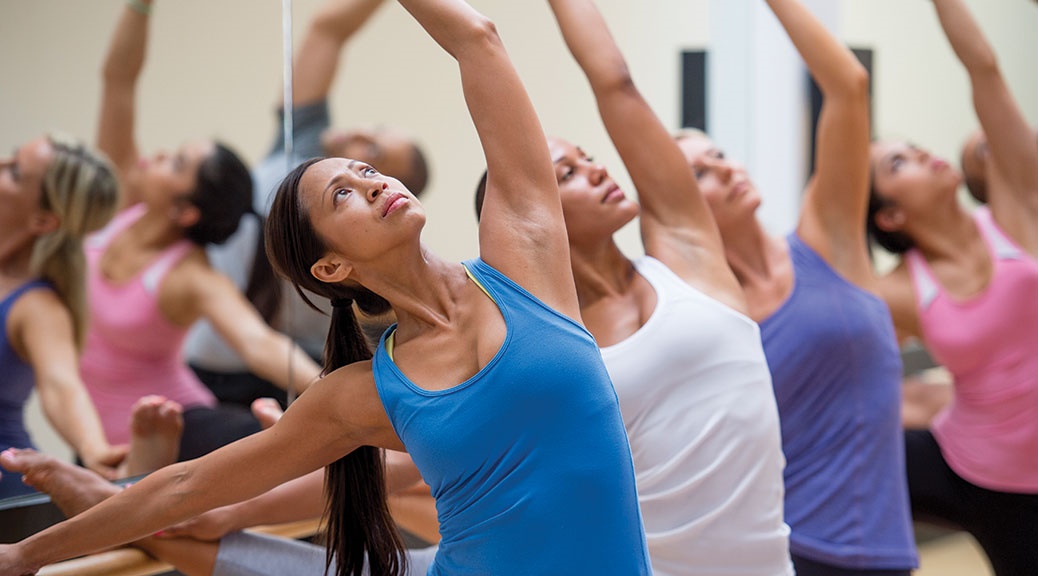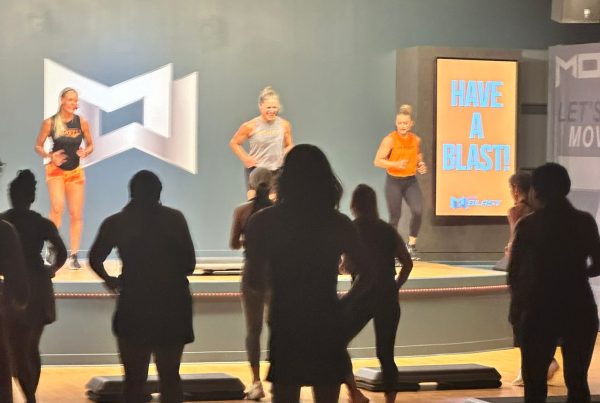Is it better to try new programmes or stick to tried-and-tested techniques?
Two instructors go head to head with their views.
Jayne says: If people demand you teach the ‘next new thing’, they’re not buying into you or your skill.
Since the launch of Les Mills (LM), I have heard this phrase so many times: “I have to teach it; the clubs only want LM” or “The members only want LM”. Yet I never heard it before LM came on the scene. At one time, this statement was so true; Les Mills was such a powerful product that, if you were not teaching it, you were not part of the buzz, the studio timetable or the biggest tribal movement that the fitness industry has ever seen. This will always be the LM legacy, and the marketing ploy of creating a strong identity that instructors and members could embody is one that Zumba capitalised on pretty soon after. LM was just different enough to attract a mass market but it introduced the necessity for clubs to pay ongoing fees and rely on third-party choreography and music in order to stay ‘in touch’ and attract those masses.
Fast forward to 2016 and we are now flooded with new programmes and licensed products, from the sublime to the ridiculous. The mindset of “I need to do the next thing” has stuck like super glue but the reality is absolutely not the case!
What does ‘new’ even mean?
I would challenge anyone to show me a new programme that includes really new fitness techniques. In fact, ever since the LM phenomenon began, new has become more and more diluted to a point that everything new relies on the theme to carry it, rather than the result. So, if you think about the harsh reality of this, if people are in fact demanding that you teach the ‘next new thing’, they are not buying into you or your skill – they are simply suggestible victims of marketing. Glow sticks are great, I understand, Chico is a lovely chap and his music is indeed catchy but, if you are looking for the very latest fitness techniques in these classes, then expect only disappointment.
As usual, I know I sound harsh and those who invest both money and passion in branded fitness take this as criticism or a slap, but my intention is not to undermine any fitness instructor. As ever, my message is simply to emphasise that there is a better way and you, my dear friends, are worth so much more. Original is YOU: it is your delivery, it is your favourite music compilation and it is your exercise prescription for the goals of the people who visit you week in, week out.
Tried and tested or tired and tested?
Tried and tested is everything from the grapevine to Olympic weightlifting. It is the information we have at our fingertips and the techniques that have inspired people to exercise over the past 50 years. The entrepreneurial instructor has invested in their future by looking beyond the sparkly new programmes and the new brutal methodologies like CrossFit and come up with their own crossbreed of training. This is not hard; it simply takes all that tried-and-tested knowledge mixed into an original form.
New programmes are something different. This is where the industry can change direction at any minute and, indeed, leave the instructor asking what has hit them as they constantly chase the latest programme in an attempt to keep up.
Professional outlook
Perhaps we should take a broader view for guidance on whether tried-and-tested knowledge trumps the novel and look to the new standard being set for the industry by the professional development body for the UK’s sport and physical activity sector, the Chartered Institute for the Management of Sport and Physical Activity (CIMSPA). CIMSPA’s vision statement is: “To develop a vibrant, UK-wide sport and physical activity sector, led by professionals providing advocacy and leadership and working in partnership with its stakeholders to help ensure the highest standards of service delivery.”
To this aim it intends to update the qualification framework to suit the demands of operators who perceive that, currently, instructors are not qualified to a sufficient standard to do their job. This, to my mind, is ironic as it’s the large operators who have cultivated instructors’ dependency on pre-choreographed programmes in the studio.
So, my conclusion here is that the industry has led the instructor into trends and techniques that have suffocated their ability to use any form of free thinking or personal delivery. It is now going to try and sell back these skills in the form of a qualification, as they are deemed much lacking and much needed.
Moving forwards is really up to everyone who teaches fitness. Tried, tested or new?
Emma says: Diversity serves up a delicious menu of choice to keep participants interested and motivated.
We don’t know what we don’t know. How do we know if we are missing out on the next best thing in group X if we don’t try new programmes?
One of the many reasons I love group X is that we are constantly reinventing it; new fads and trends come and go, some stand the test of time and some don’t. It’s a fun, vibrant and shiny sector to be in – and great at attracting new participants as a result. Did you know that about a quarter of all current group X participants were previously inactive before starting classes, according to a recent survey by the Exercise, Movement and Dance Partnership and YouGov?1
The class next door
I’ve been lucky enough to teach various group X classes for more years than I like to remember and I’ve had one particular studio cycling class for 15 years. My class is next door to the regular studio, where I have seen all sorts of weird and wonderful incarnations of group X come and go during my 18:00 Tuesday slot. But that’s OK: our sector thrives on this diversity and serves up a delicious menu of choice to keep participants interested and motivated. All of these quirky classes next door have appealed at one time or another and drawn new people into studios and into our world.
The science
My sports science may be a little rusty but, if I remember rightly, our bodies get comfortable doing the same things all the time. We need to keep finding new ways to physically challenge ourselves and overload our muscles and joints to drive them to change. I have definitely gained traction with the phrase “no challenge: no change!” more than once while teaching.
This is not to mention the psychological benefits of learning a new move, technique or skill. Various studies have shown how learning dance steps, for example, helps maintain brain function as we get older. We have to keep mixing things up to keep both body and mind in good shape.
Keeping it real
So, a constant supply of new programmes is a good thing for participants, right? But what about we instructors? The above benefits apply to our bodies and minds but what about the real impact? The new training we need to go on, the new music, the new licence, the branded kit – it doesn’t come cheap, plus there’s the time it takes to learn or plan new choreography and class formats. Keeping up with the trends can be challenging. The Working in Fitness Survey 2016 (produced by the Exercise, Movement and Dance Partnership and SkillsActive)2 cited a number of key reasons instructors struggle to keep classes going, with 29% of respondents stating additional costs, such as these, as a big barrier. Over 60% of respondents also identified training costs as another challenge.
Group X is big business now, with new commercial brands emerging all the time. They help to draw people into our classes, provide variety and, arguably most importantly, grab media attention and shine the spotlight on what we do.
Worldwide trends
The American College of Sports Medicine (ACSM)3 publishes a fascinating report every year of the Top 20 Worldwide Fitness Trends, showing the group X ‘stayers’ and the ‘fads’. Yoga, for example, has been a stalwart of the top 20 for many years. High-intensity interval training (HIIT) exploded into the top 20 (straight in at number one) in 2014 and maintains a top-three position for 2016. Others have flown in and out of the top 20 and have been officially classified by ACSM as ‘fads’.
What we haven’t managed to do as a group X sector is significantly grow the overall number of people who take part in recent years. We have, however, very efficiently recycled them through the flow of new programmes. We have kept people challenged and interested and drawn new people in to replace those who have left – and kept the sector exciting and attractive as a result. After all, everything was new once.
The future
This summer will see industry-wide action to help grow participation numbers in group X. As part of the new FitgroupUK initiative, we will be asking for your views as fitness professionals on a number of key industry issues. Keep an eye on fitgroupuk.co.uk for more information.
This article first appeared in Fitpro magazine summer 2016 edition, out now and free to all FitPro members. fitpro.com
Author biographies
Jayne Nicholls has had a huge impact on freestyle fitness in the UK. She is the creator of Freestyle Fitness Yoga and director of Group X Training Ltd, which provides training through national tours and DVDs.
Emma Forward has been teaching group X for 18 years and is the chief operating officer of the Exercise, Movement and Dance Partnership, the national governing body for group X and dance fitness, and the organisation behind FitgroupUK.
View the FitPro Magazine References for more information.







